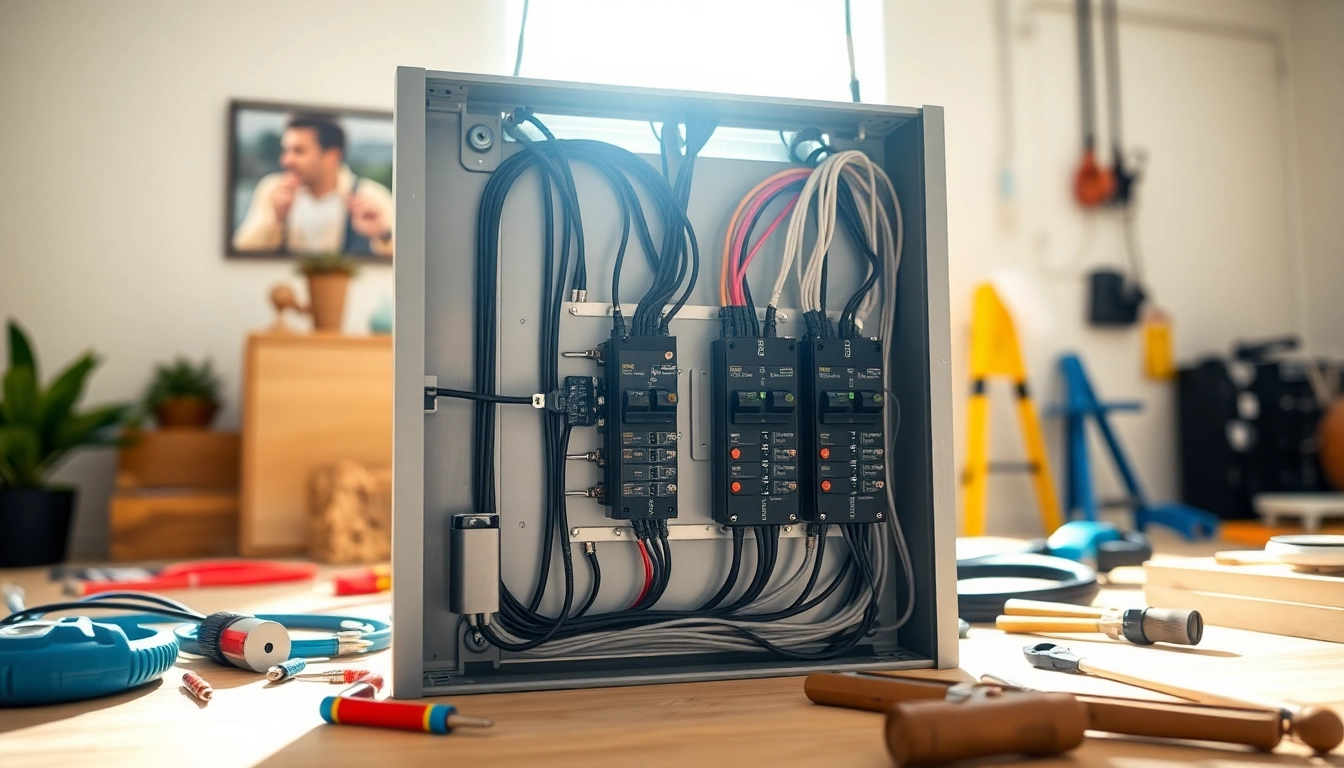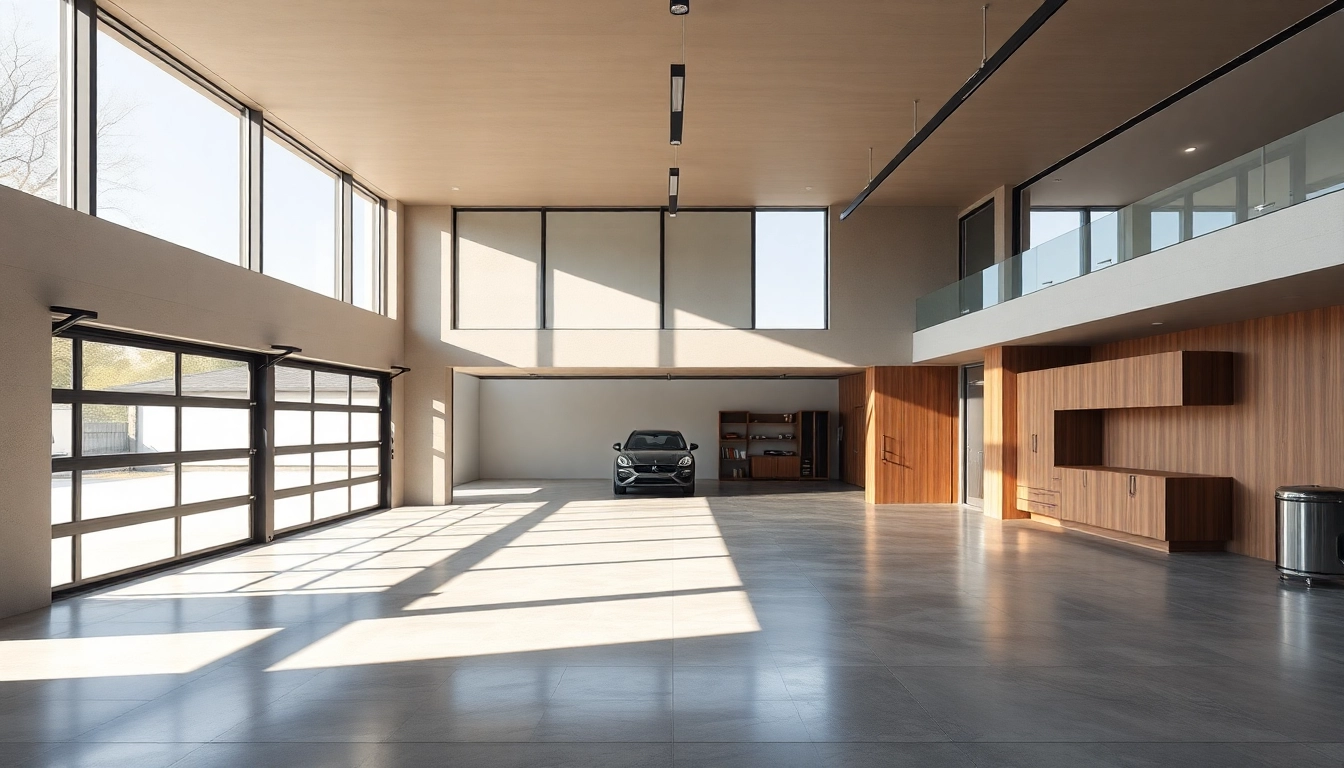Understanding Electrical Panels
What is an Electrical Panel?
An electrical panel, often referred to as a breaker box or fuse box, is a crucial component of your home’s electrical system. It serves as a central hub that distributes electricity from the utility service line to various circuits throughout the home. The panel holds the circuit breakers or fuses, which protect your home from electrical issues like overloads and short circuits. Essentially, it connects your home to the power grid and allows you to manage the flow of electricity in a safe and organized manner. Additionally, you can read more about the critical function of an electrical panel in this Electrical Panel overview, which provides further insights into its importance.
The Role of Electrical Panels in Your Home
The electrical panel plays several key roles in your home by ensuring a reliable and safe electrical supply. Its main functions include:
- Distribution of Electricity: The panel channels electricity to different circuits, which power outlets, lights, and appliances across the home.
- Safety Mechanism: Circuit breakers or fuses within the panel protect your electrical systems by cutting off the power in the case of overloads or faults, preventing potential fires.
- Control and Management: Homeowners can easily turn off individual circuits when needed for maintenance or safety, and they can manage the electricity supply to different areas of the house.
- Monitoring Electrical Use: Many modern electrical panels come with smart technology that allows you to track energy consumption, helping you save on electricity bills and improve energy efficiency.
Types of Electrical Panels Explained
There are several types of electrical panels available, each serving different needs and electrical demands:
- Main Breaker Panel: This is the most common type, used in residential homes to control all electrical circuits.
- Subpanels: These panels are used when additional circuits are required, especially in larger homes or when renovations increase electrical demand.
- Load Centers: Often used in commercial settings, these panels handle higher electrical loads and feature multiple circuits for larger appliances.
- Smart Panels: Equipped with modern technology, smart panels allow for remote monitoring, energy usage tracking, and integration with home automation systems.
Signs You Need to Upgrade Your Electrical Panel
Identifying Electrical Overloads
One of the most apparent signs that you need to upgrade your electrical panel is the frequent occurrence of electrical overloads. This may manifest as:
- Circuit breakers tripping regularly while using common appliances.
- Lights flickering or dimming when high-energy devices are turned on.
- The need to use multiple power strips or extension cords to manage electrical demands.
These symptoms indicate that your current panel cannot handle the electrical load, thereby increasing the risk of fires and other electrical hazards. If you notice these issues, it’s vital to consult with a licensed electrician to evaluate the panel and discuss upgrading options.
Age and Condition of Your Current Panel
The age of your electrical panel is another critical factor to consider. Many panels are designed to last 20 to 30 years. If your panel is older than this, it may not only be outdated but also potentially unsafe due to wear and tear or obsolete technology. Signs that your panel may need an upgrade include:
- Visible rust or corrosion inside the panel.
- Faded or cracked casing that may expose wiring.
- Bulging or melted circuit breakers.
Additionally, if you’ve replaced multiple circuit breakers or if your panel features fuses instead of circuit breakers, these are signs that an upgrade is necessary to keep your total electrical system safe and functional.
Changes in Home Electrical Needs
Dramatic changes in your household can indicate that it’s time to upgrade your electrical panel. Common scenarios include:
- Addition of large-capacity appliances (e.g., HVAC systems, electric stoves, or hot tubs).
- Home renovations that introduce additional electrical circuits (e.g., new rooms, home offices).
- Increased use of electronic devices and gadgets in your home.
If your lifestyle or home dynamics have changed, you may find that your current electrical panel is insufficient for your new demands. A qualified electrician can help assess if an upgrade is necessary to avoid potential electrical hazards.
Choosing the Right Electrical Panel
Factors to Consider When Selecting an Electrical Panel
When it’s time to choose a new electrical panel, several factors should guide your decision:
- Amperage Needs: Determine how much amperage you’ll need based on your home’s size and electrical requirements. Common residential panels range from 100 to 200 amps.
- Panel Size: Ensure the panel size matches your home’s layout and will accommodate future expansion if needed.
- Brand Reputation: Research manufacturers and select panels from trusted brands known for safety and reliability, such as Square D, Eaton, and Siemens.
- Code Compliance: Ensure the panel complies with local codes and regulations, as violations can lead to fines and safety hazards.
Comparing Brands and Models
Not all electrical panels are created equal, so it’s essential to compare different brands and models based on performance, safety features, and warranty. Popular brands like Square D, Eaton, and Schneider Electric offer a range of products, each with unique features:
Square D
Known for its wide selection of residential panels, Square D offers models like the Homeline series for budget-conscious homeowners and the QO series for those needing higher performance.
Eaton
Eaton panels are recognized for their innovative designs and safety features, such as their arc detection technology that reduces the risk of electrical fires.
Siemens
The Siemens brand combines quality and value, focusing on energy efficiency and smart technology integration for modern homes.
Understanding Amperage Ratings
Amperage ratings are crucial for ensuring your electrical panel can meet your home’s needs. Here’s what you need to know:
- 100 Amps: Suitable for smaller homes or apartments with basic electrical needs.
- 200 Amps: Most common for newer homes; accommodates modern electrical demands and offers room for growth.
- 400 Amps or Higher: Generally reserved for larger homes, high power consumption demands, or homes with multiple significant appliances running simultaneously.
Consulting with an electrician will help you decide on the appropriate amperage based on your home’s specific requirements.
Installation and Maintenance of Electrical Panels
DIY vs. Professional Installation
While some homeowners may consider installing an electrical panel themselves, this is not advisable for most due to the potential hazards involved. A licensed electrician has the expertise to ensure:
- The installation complies with electrical codes and regulations.
- All safety measures are followed to prevent electrical hazards.
- The panel functions effectively within your home’s existing electrical system.
However, minor updates, like replacing breakers, can often be handled DIY if the homeowner has the necessary skills and knowledge. Always prioritize safety over cost-saving measures when dealing with high-voltage systems.
Essential Maintenance Tips for Electrical Panels
To maintain the efficiency and safety of your electrical panel, here are some essential tips:
- Regular Inspections: Schedule periodic inspections with a qualified electrician to check for wear and tear.
- Keep the Area Clear: Ensure that there is ample space around your panel for easy access in emergencies.
- Avoid Overloading Circuits: Be mindful of your electrical load and avoid connecting too many devices to a single circuit.
Regular maintenance of your electrical panel can prevent hazardous situations and extend its lifespan.
Common Mistakes to Avoid During Installation
Installing an electrical panel requires careful attention to detail. Here are common mistakes homeowners should avoid:
- Neglecting Local Codes: Different municipalities may have unique electrical codes that must be followed.
- Inadequate Grounding: Proper grounding is essential for safety; ensure your panel is correctly grounded to prevent issues.
- Insufficient Space: Ensure enough room for future expansion and maintenance access by selecting an appropriate installation location.
Avoiding these mistakes can lead to safer and more efficient electrical setups.
Cost Analysis of Upgrading Your Electrical Panel
Budgeting for Panel Upgrades
The financial aspect of upgrading your electrical panel requires careful consideration. The overall cost can vary widely based on:
- Panel Type: Basic panels are cheaper than advanced models with additional features.
- Installation Fees: Labor costs can add significantly to the overall expense; hiring licensed electricians typically costs $50 – $100 or more per hour.
- Permitting Fees: Often required for upgrades, these can vary by location.
Budgeting adequately for this project can prevent unexpected financial burdens down the line.
Potential Long-term Savings from Upgrades
Upgrading your electrical panel can lead to considerable long-term savings by:
- Reducing energy costs through improved energy efficiency.
- Preventing electrical fires and damage to appliances through better load management.
- Increasing the value of your home, especially if you plan to sell in the future.
Investing in a modern electrical panel may have higher upfront costs but can save you significant money and peace of mind in the long run.
Comparing Costs of Different Electrical Panels
The price of electrical panels can vary based on amperage and brand. Here’s a rough breakdown of what you might expect to pay:
- 100 Amp Panel: Typically ranges from $200 to $300.
- 200 Amp Panel: Generally falls between $400 and $800.
- 400 Amp Panel: More specialized and can exceed $1,000.
Additional features and smart technology will increase investment costs. Always compare between brands and models to find the best fit for your needs and budget.



